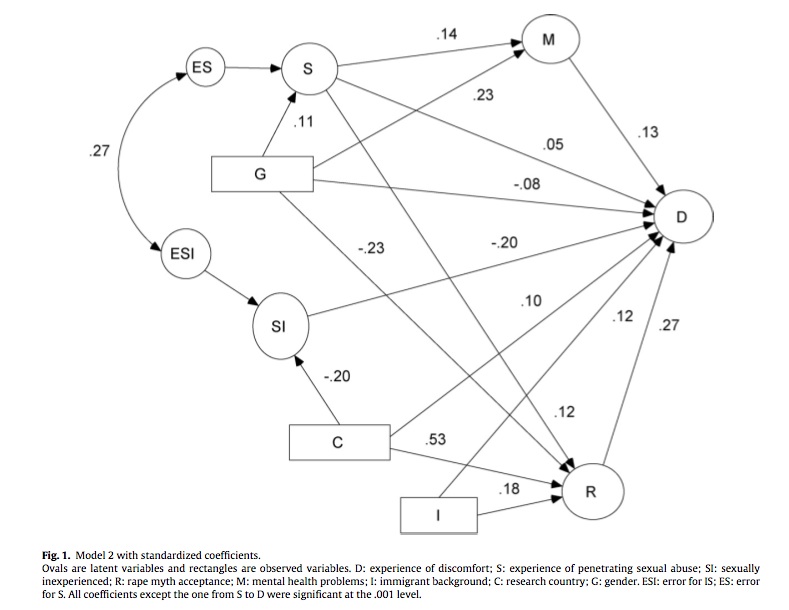Lessons learned from reading research
I wish reading research were a simple process of learning new knowledge. Instead, I have to consider the research question, methodology, strategy to select the sample, recognize the limitations of the research and evaluate the relevance to the practice of sexual violence and domestic violence prevention. And sometimes I cannot understand things like this chart below.
Here is my weekly routine:I review the summary of abstracts from recently published research as compiled by Safety Lit. I read the title of each violence related study. For those that catch my interest, I read the abstract. From those studies, I work with my colleagues at the National Sexual Violence Resource Center to get copies of the article that have appear to have implications for prevention practice.
Then I learn that the conclusion does not always fit what was actually studied. Or that I cannot figure out how the research leads to the conclusion.
I am not a researcher. During my studies for my masters degree I learned to be a good consumer of research. I interpret research and know many of the questions to ask. But I am not an expert on statistical methods nor am I always able to understand how they actually did the research.
This week I saw the interesting title of an article, Vulnerable adolescent participants’ experience in surveys on sexuality and sexual abuse: Ethical aspects from the journal Child Abuse and Neglect. This study explores an important question about the possible discomfort of adolescents when they participate in a survey about sexuality and sexual abuse.
But as read the analysis, I do not understand what they are doing. This might be excellent research; but its methodology is too much for my skills to understand. If I cannot read research, what about people who have even less experience with research. My colleagues at VAWnet create Applied Research papers to address this – but we need to understand research.
What do you do to understand research?
The abstract and full citation of the article follows.
Vulnerable adolescent participants’ experience in surveys on sexuality and sexual abuse: Ethical aspects.
Priebe G, Bäckström M, Ainsaar M. Child Abuse and Neglect 2010; ePublished April 18, 2010
Click here for a link the article on the journal’s web site.
(Copyright © 2010, Elsevier Publishing)
OBJECTIVE: The aim of this research was to study the discomfort experienced by adolescents when answering questions in a survey about sexuality and sexual abuse and to investigate factors that may determine possible experience of discomfort. The research focused particularly on vulnerable adolescents-sexually abused and sexually inexperienced.
METHOD: Adolescents in their final year of high school in Estonia (n=1,334) and Sweden (n=3,401) who had completed a survey about experiences of sexuality and sexual abuse answered additional questions about experiences of discomfort related to the survey questions.
RESULTS: A majority of the participants did not feel discomfort when completing the survey. This was also the case for the two vulnerable groups. Experience of penetrating sexual abuse, sexual inexperience, mental health problems, rape myth acceptance, gender, immigrant background, and country were included in a structural equation model. Experience of penetrating sexual abuse was not significantly related to discomfort in the final model, while sexual inexperience was associated with increased discomfort (standardized coefficient .20) and rape myth acceptance was the strongest indicator of discomfort (.27). The total amount of explained variance was 17%.
CONCLUSIONS: Our data do not support the view that adolescents in general or vulnerable subgroups such as sexually abused or sexually inexperienced adolescents experience discomfort when answering a survey about sexuality and sexual abuse. As discomfort ratings were not highly related to any of the predictors further research is needed that includes other factors. It is important to follow existing ethical guidelines since there may always be some individuals who feel discomfort.

